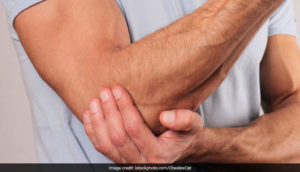7 Beets Benefits For Your Health, From Losing Weight To Better Sex
2017-07-25
Beets are one of those foods you love, hate, or forget they even existed. The nutrient-dense superfood is getting a second look as more research reveals the beet’s health-boosting effects on the mind and body. Adding more beets to your diet can help boost longevity, from aiding weight loss to preventing chronic diseases, like cancer.
Beets have a rich nutritional profile that provides a plethora of health benefits. Also known as blood turnips, beets are an excellent source of fiber, vitamin C, magnesium, and folate. The underrated vegetable is an acquired taste, but the nutritional powerhouse can add years to your lifespan if consumed on a regular basis.
Below are 7 benefits of beets that boost your physical and mental health.
Boosts Weight Loss
Beets help you detox and lose weight because they contain no fat and are a good source of dietary fiber — half soluble and half insoluble. These two types help fight fat by maintaining proper bowel function and lowering cholesterol levels for weight loss. Similarly, beets are rich in magnesium, a mineral that supports optimal nerve and muscle functioning, which could be beneficial for losing weight.
A 2011 study found high levels of magnesium led to higher levels of testosterone — a hormone that promotes fat tissue loss and increases in muscle. Since muscle burns more calories than fat, maintaining or building muscle can help with shedding the pounds. Moreover, beets contain phytonutrients known as betalains — betanin and vulgaxanthin — which are effective in reducing inflammation and supplying the body with antioxidants. Betalains also support detoxification, which may contribute to weight loss.
Boosts Strength
Beet juice can be valuable if you’re looking to boost endurance during your workout. Previous research has found those who drank beet juice before working out were able to exercise for up to 16 percent longer. Researchers believe the nitrate content in beets, which turns into nitric oxide, reduces the oxygen cost of low-intensity exercise while enhancing the stamina for high-intensity exercise.
In other words, nitrate-rich food can increase exercise endurance.
Improves Digestion
Beetroots have been linked to improving poor digestion by exciting the nerves in the intestines and enhancing the body’s ability to digest food. A cup of beetroot contains 3.4 grams of fiber, which makes beets a good source of fiber. Fiber makes you regular because it bypasses digestion and travels down to the colon, where it feeds friendly gut bacteria or it adds bulk to stool.
Improves Sexual Health
The superfood has been labeled as “nature’s Viagra” due to its nitrate content. Similar to Viagra, beet intake increases nitric oxide formation, which dilates blood vessels and boosts circulation to the penis. This leads to better erections for men during sexual intercourse, and helps them last longer in bed.
Lowers Blood Pressure
Beetroot juice can effectively lower blood pressure in men. In a study published in Nutrition, men and women who drank 17.6 ounces of beet juice, which consisted of about three-fourths beet juice and one-fourth apple juice, had a lower systolic blood pressure six hours later. However, when researchers limited their analysis to men, they found a significant reduction of about 4.7 points among those who drank beetroot juice versus the placebo.
Researchers believe it’s beets’ high nitrate content that produces these heart-healthy effects. The body converts nitrates from sources like beets into nitric oxide in the body. The nitric oxide then relaxes blood vessels and increases oxygen and blood flow, therefore, lowering blood pressure.
Prevents Cancer
The phytonutrients in beets, like betalains, have been found to be cancer-preventive. Animal studies have shown beets inhibit carcinogen formation and increase the production of immune cells and body enzymes that help stop cancer from developing. Specifically, a 2013 study found beetroot extract reduced multi-organ tumor formation in several animal models when added in drinking water.
The science is still murky with humans; a study published in the Australian International Clinical Nutrition Review claimed a 50-year-old man recovered from lung tumor, which clinically corresponded to lung cancer, after consuming beetroot. After six weeks, the tumor disappeared, and four months later, the man gained back over 20 pounds of weight. Researchers are still hesitant on making bold claims about the vegetable.
Boosts Brain Health
Beets are considered brain food that can slow the effects of dementia and Alzheimer’s disease. Drinking beet juice increases blood flow to the brain of the elderly, which may fight the progression of dementia, according to a 2010 study. A high-nitrate diet led to an increase in blood flow to the white matter of the frontal lobes — the areas of the brain linked to degeneration from dementia and other cognitive disorders.
Folic acid in beetroot can help protect against Alzheimer’s by preventing damage to the hippocampus, which the brain devoted to memory and learning. In an animal study, mice with Alzheimer’s-like plaques in their brains were fed a diet that included a normal amount of folic acid. Those fed the folic acid diet had more brain cells in the hippocampus compared to their folic acid-deficient counterparts.
Researchers suspect that high levels of homocysteine in the brain may damage the DNA of nerve cells in the brain. Folic acid is believed to work by helping protect the brain by allowing nerve cells to repair this DNA damage.
It’s important to talk with your doctor before substituting drugs with beets to treat these various health conditions.







